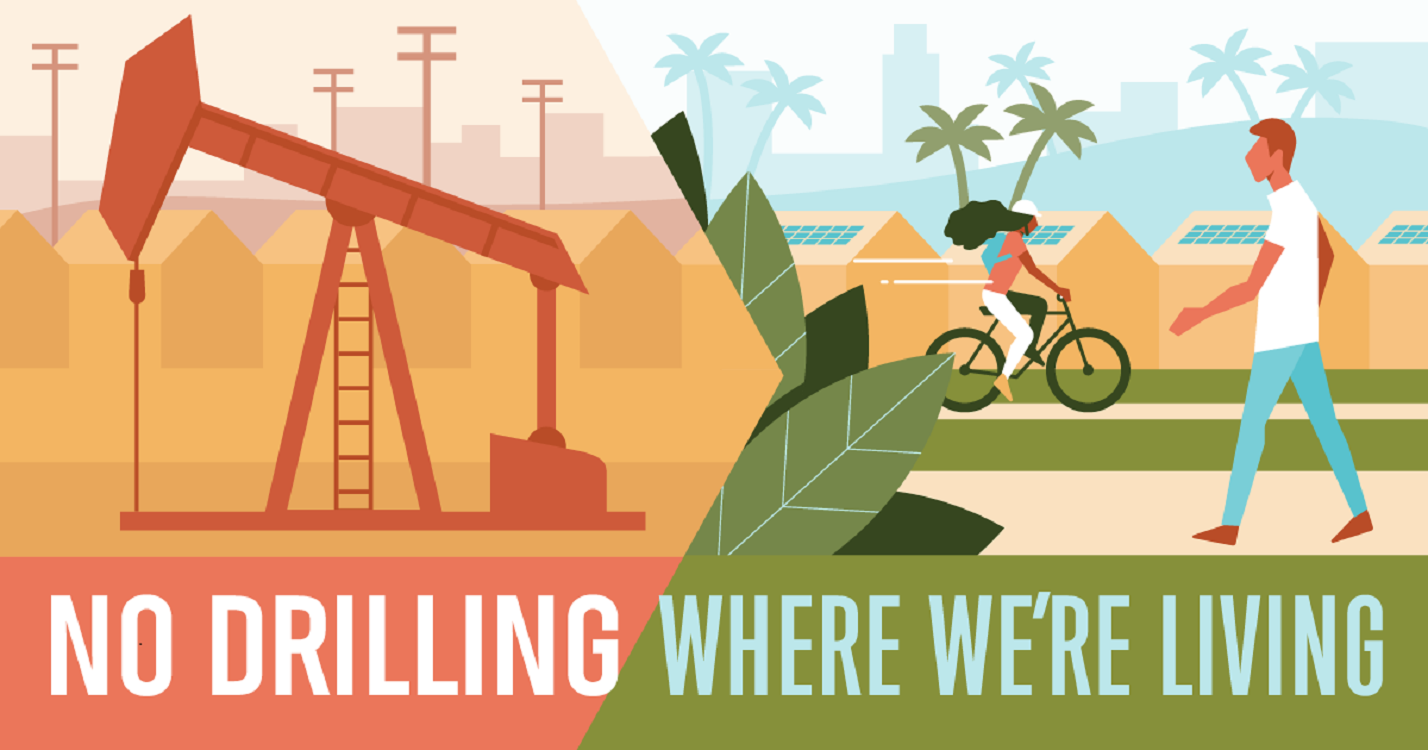Last week, the Los Angeles Board of Supervisors took a historic step to phase out oil drilling in Los Angeles County. It voted unanimously in favor of banning new oil drilling, and beginning the process of phasing out existing drilling in unincorporated LA County, which is home to the largest urban oil field in the country. The Board of Supervisors also passed a motion to expand the Just Transition Taskforce, to ensure that we adequately transition fossil fuel workers to high-paying jobs and support the communities where oil drilling occurs.
Angelenos have been forced to live with dangerous oil drilling in our backyards for far too long. Unincorporated Los Angeles County has over 1600 active and idle wells, the majority located within 2,500 feet of homes, hospitals, parks, daycares, and schools. More than 580,000 Los Angeles residents live within one-quarter mile of an actively producing oil and gas well. Some live just three feet from the boundary of a drill site.
Residents of color are disproportionately likely to live near oil and gas wells and suffer greater health harms: 44 percent of Black, 37 percent of Latinos, and 38 percent of Asian residents live near oil and gas wells, compared to 31 percent of white residents. Remember the largest urban oilfield I mentioned? It’s adjacent to several Black communities.
Neighborhood drilling poses unacceptable health risks to those who have little choice but live near it. It exposes residents to toxic chemicals and smog-forming pollutants that make them more likely to experience respiratory illness, lung cancer, nervous system damage, reproductive disruption, and as more and more studies are showing, increased rates of death from COVID-19. Phasing out production from these wells, cleaning them up, and banning any new wells will go a long way toward protecting the health and safety of LA communities.
Community members and environmental justice organizations have spent years working for an end to neighborhood drilling. This historic vote is the direct result of communities coming together to demand better. The Sierra Club, along with our coalition partners, collected over 4,000 petitions, sent a community letter that over 150 labor, faith, and community organizations signed onto, as well as a letter in support of phasing out drilling from over 45 elected officials. Nine out of 15 current city council members signed on in support of the motion, and Councilmember Joe Buscaino, whose district contains the highest number of wells in LA County also spoke in support. Los Angeles City Council is working on a similar motion to phase out oil drilling, but it hasn’t passed through all the committees yet.
Our coalition pushed the Board of Supervisors to find the political will to do what no other county had done before -- in a place founded on oil. In many ways, California is an environmental leader whose policies set the standard for states across the country—which is why this ban on oil drilling is so exciting. In other ways, though, it hasn’t lived up to its green reputation. Many of its politicians, who rely on campaign contributions from the oil and gas industry, have blocked policies that would protect their constituents' health from the toxic impacts of drilling and stave off the worst impacts of the climate crisis. In the last few years, bold climate bills, including legislation to enact 2,500-foot setbacks in between oil wells and homes, schools, hospitals and other sensitive sites, have failed to get enough votes to become law. The state agency responsible for regulating the oil industry, CalGEM, has also failed to draft their public health and safety rule, despite numerous commitments to do so over the past two years.
The LA County Board of Supervisors’ vote to phase out drilling shows that another path is possible. When communities come together to demand it, politicians can find the will to protect public health and our climate, defying industry lobbying. As California agencies and elected officials consider major new environmental protections this year, we’ll be working to ensure they remain on this new path—one that leads toward a better future for all Californians.
